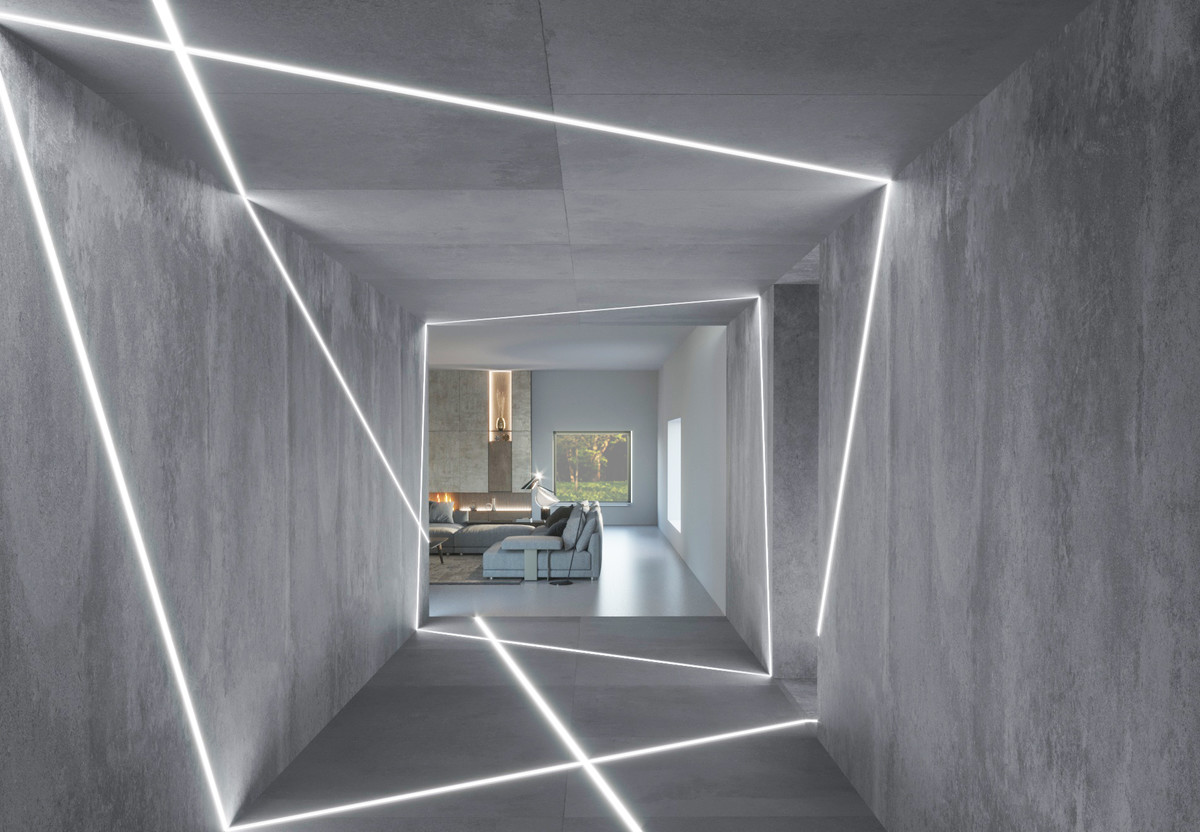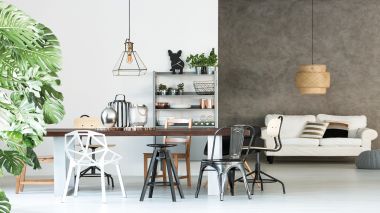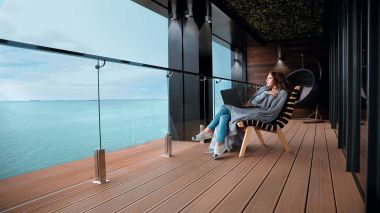Do it yourself - installation of LED strips
LED strips are an increasingly popular type of lighting. We often wonder whether it is complicated. We want to show you that it is not as difficult and time-consuming as one might think.

Backlighting the ceiling with LED strips is a popular way to create striking decorative lighting. We should think about it already at the stage of renovation or make changes in our homes so that we can prepare an adequate structure for a suspended ceiling. We should also give some thought to what we want it to look like and what effect we want to achieve. It is a good idea to stick LED strips on shelves making them appear invisible. As a result, we get discreet lighting that can create a nice mood in the evening, or complement the main lighting in an interesting way.
LED strips can be installed in two ways:
The first one is to embed them in aluminium profiles. It is useful if the strips are to be placed in areas exposed to direct touch (the floor, walls or counters). Another way is to stick them directly to the surface. To install them, we must only remove the protective paper and lightly (in order not to damage the diodes) press them against the surface. The surface must be previously cleaned of dust and degreased. The other side of the strip is covered with adhesive coating, which it is which makes it possible to embed the strip well in the selected place.
It is a good idea to use a multicolour (RGB) strip on the ceiling. A controller will also be required to make it possible to change the colour of the light, its intensity and other functions - depending on the strip which chosen by us. A remotely-controlled controller is the most convenient to install. We connect it using two cords with a power supply changing the alternating current from 230V installation to direct current of low voltage, which is needed to power the strips. We should pay attention to the + and – markings (if we get them wrong, the strip will not work).
The LED strips are available in longer segments (5 meters minimum). They can be cut in marked spots (every few centimetres) in order to fit them to the area which we want to illuminate. The LED strip ends with a bundle of power cords - each RGB strip has four of them. We connect them to the controller, paying attention to their colours and corresponding port markings: R- red, G - green, B - blue, V+ - black.
The length of the cords connecting the power supply to the 230V electric installation is not determined, but the cords connecting the strips to the power supply (in this case, one power supply is for two strips) should be as short as possible, due to voltage drop. Therefore, it is best to place the power supply on a shelf made of gypsum-cardboard plates. If it is too narrow, we can hide it in the build-in, in the inspection hole. We should remember, however, that we must be able to access the power supply easily, in case of a malfunction.
After we switch on the power supply we should check whether we didn't make a mistake while connecting the cords. In such case, the light will not turn on, or its colours will not match the description on the remote controller. At this point, we can fix possible faults.
Multicolour RGB LED strips are mainly used for decoration. It is a very good solution for watching TV at night, creating an atmosphere to relax or giving your interior a cosy feel. However, more often we still need a fixture providing main light. We connect it to the electrical installation, paying attention to cord insulation colours: blue means neutral cord (N), yellow-green means protective cord (PE). Other ones - usually brown, black or grey - are phase cords (L).
We should remember to choose LED bulbs that suit our taste. We can also choose a fixture with an integrated source of light. We should opt for proven solutions provided by renowned manufacturers. Artificial light accompanies us most of the time, especially in the autumn and winter. This is why it is so important that we choose proven solutions and refrain from buying low-quality lighting. It is worth considering purchasing bulbs with the TUV certificate that confirms their quality and safety, for example IQ-LED Kanlux.
We should remember that lighting should be functional. Switching the main lighting should be independent of the decorative lighting control. This way, we will be able to quickly decide which light will accompany us at a given time.
Other articles
 Smart lighting management in your home – where to start?
Smart lighting management in your home – where to start?
Smart lighting systems are not only a matter of convenience, but also a conscious step towards better...
 How does LED lighting work?
How does LED lighting work?
The LED lighting in our homes, offices and public areas is here to stay. Today, it is hard to imagine...
 How can lighting create a spa atmosphere in your bathroom?
How can lighting create a spa atmosphere in your bathroom?
When designing a bathroom, not only aesthetics but also lighting matter—when selected appropriately,...
 Ceiling lighting: pendant, ceiling-mounted, or spotlight – which one to choose?
Ceiling lighting: pendant, ceiling-mounted, or spotlight – which one to choose?
Ceiling lighting is not only a matter of aesthetics – it is a crucial element that influences both...
 Guide: How to choose light bulbs for different spaces?
Guide: How to choose light bulbs for different spaces?
Appropriate lighting is one of the most important elements of interior design, yet it is often underrated....
 IP Rating - how to choose lighting for the bathroom, surroundings, house facade and garden?
IP Rating - how to choose lighting for the bathroom, surroundings, house facade and garden?
What is an IP Rating? How to choose appropriate lighting for the bathroom, garden, or house facade? Discover...